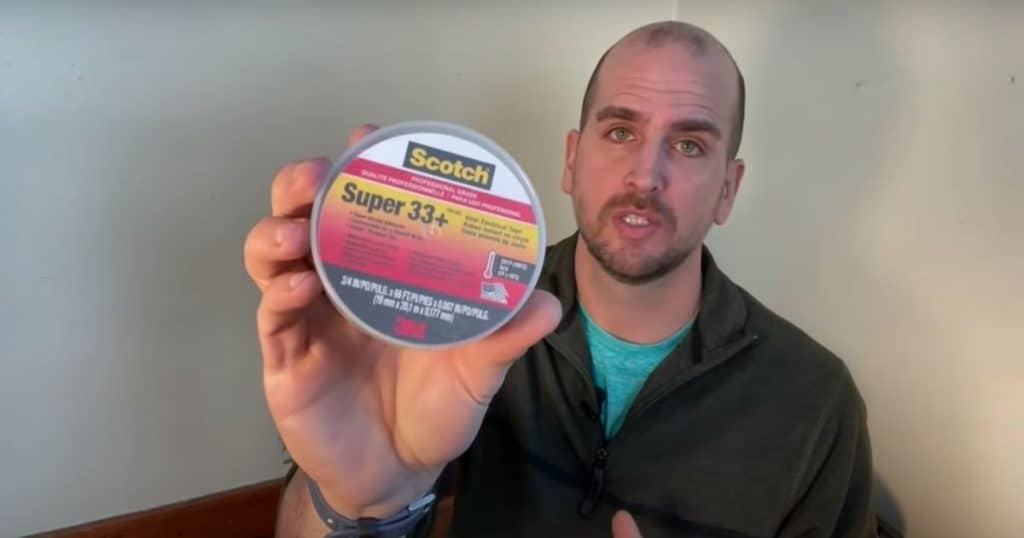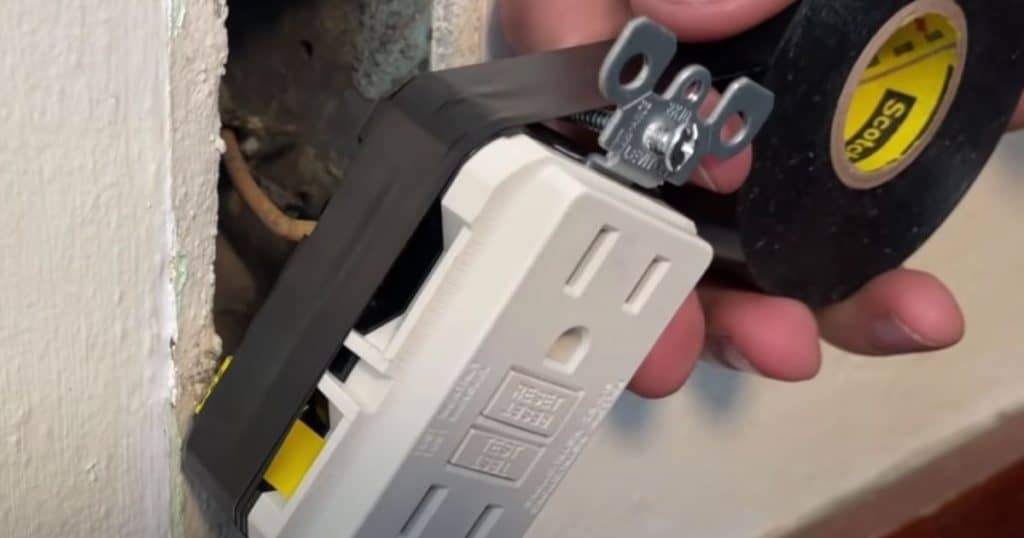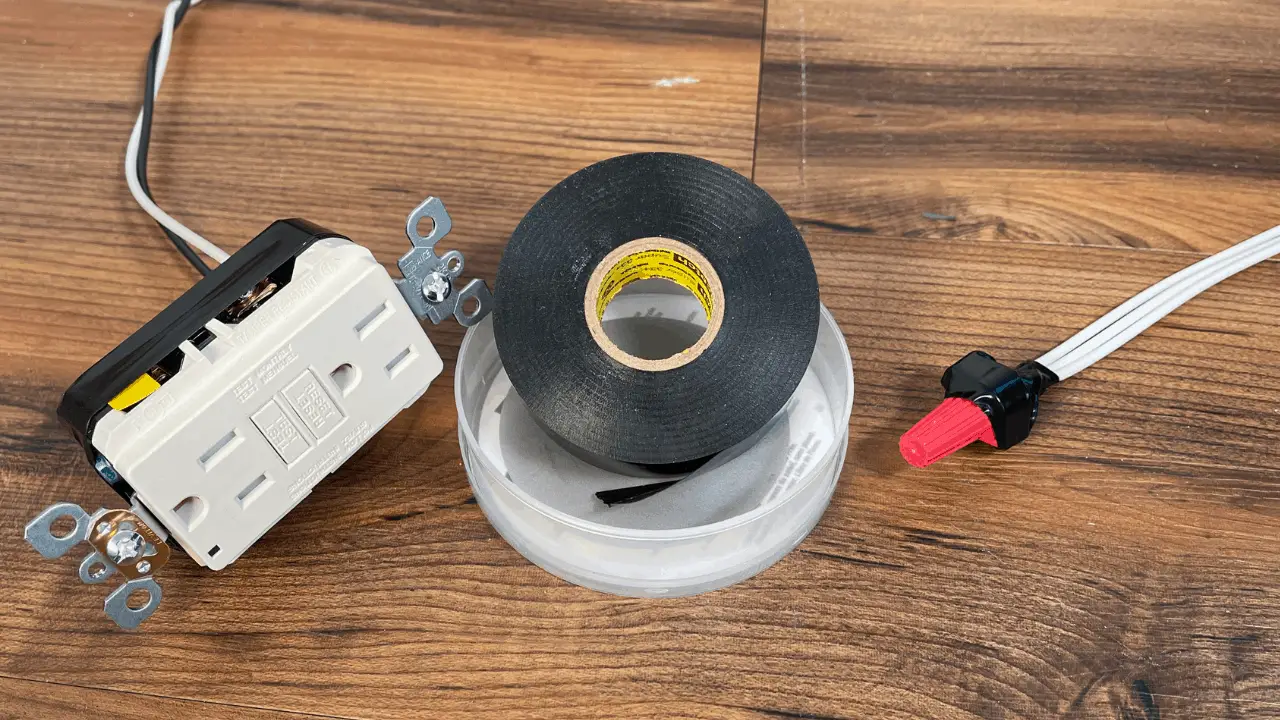On our YouTube Channel, almost every day I get a comment associated to whether you should or shouldn’t wrap an outlet, properly called a receptacle, in electrical tape. In the US the National Electrical Code does not provide guidance on this practice and it seems to vary across different regions and electricians.
Although I am not a licensed electrician, it has been my practice when working in a metal box I like to apply two wraps of 3M Scotch Super 33+ black PVC electrical tape, to keep things insulated and safe.
Continue reading to learn more about why electrical tape is sometimes used for these situations, as well as the best practices for doing so. If you prefer a video format, check out my YouTube channel to watch a video instead!
YouTube Survey Results
Since I have received so 1000’s of comments across my electrical videos, I wanted to get some community feedback to determine how many people like to use electrical tape to wrap their receptacles before putting them into the box. As such, I created a survey with the following options and responses.
Do you wrap outlets (receptacles) with electrical tape when wiring?
- Yes
- No
- Only when in metal boxes
If you would like to participate in future surveys, make sure that you subscribe to my YouTube channel, and then select the community tab of my channel page. You’ll see text posts and pictures that I’ve put out for my community on this page, and any future surveys will be right there!
The results of the survey were very interesting.
The latest results from 1,700 viewers, show around 34% of people state that they use electrical tape for all or most of their receptacles. Another 19% of voters said yes, but only if they are installing their receptacles into metal electrical boxes. The remaining 47% of voters stated that they do not wrap any of their receptacles in electrical tape before installing.
If you combine the ‘yes’ respondents with the ‘yes, but only in metal electrical boxes’ respondents, the split is almost perfectly 50/50.
In my case, I fall into the camp of wrapping receptacles in electrical tape only if there is a tight fit or if there are other factors that make a regular installation challenging.
In the video that accompanies this article, I install a GFCI receptacle to replace an old two-prong outlet that doesn’t have a ground wire coming to the box. Due to the electrical box’s size and the GFCI receptacles’ size, I applied two wraps of electrical tape around the receptacle before I installed it.
The Best Electrical Tape

I use the 3M Super 33+ electrical tape, which I believe to be the best option as it is the original.
A quick note on the history of electrical tape is that in January 1946, 3M managed to get the patent for vinyl electrical tape. Back in the 40s and 50s, a wiring system called knob and tube wiring was prevalent in homes.
This system meant that electricians needed to splice and solder wires together. Before the creation of electrical tape, these splices were insulated with a kind of tar-coated cotton wrap that was inherently messy, deteriorated over time, and contained sulfur, which often led to corrosion.
Thanks to 3M’s electrical tape, home wiring took a massive step forward. If you visit any home improvement store, you can find many different electrical tape varieties, but the Super 33+ will fit most of your needs. While those other knockoffs may be cheaper, the 3M brand will give you what you pay for, and anyone working on that receptacle in ten years will thank you for making the investment!
How To Wrap A Receptacle Correctly

I have outlined below the steps you will want to take to wrap an electrical receptacle correctly. Remember that if following a video is easier for you, you can check out the matching video on my YouTube channel!
Step 1
Start at the top and attach the electrical tape to the corner of the receptacle. Do not stretch the tape yet; unwrap it from the roll and apply it carefully to the receptacle.
Step 2
Carefully slide the tape underneath the mounting screws. Ensure that you don’t fold the tape on itself as much as possible.
Step 3
As you bring the tape around the side with the terminal screws, this is the moment when you stretch the tape slightly, as recommended by 3M.
Step 4
Bring the tape around the top of the receptacle, and again be careful to slide it underneath the mounting screws.
Step 5
As you bring the tape down the other side of the receptacle, stretch it slightly over the terminal screws once again.
Step 6
When you have completed your second revolution, ensure that you do not stretch the tape to break it off. Instead, use scissors or micro-side cutters to cut the electrical tape, and then lay it down flat to complete the wrap.
One of the most vital parts of this installation is ensuring that you do not stretch the electrical tape as you complete the wrap. Laying it down flat instead of pulling it will mean that it sticks correctly and securely to the underlying layer, preventing it from loosening over time.
Can I Use Electrical Tape To Secure A Wire Nut?

One question that comes up frequently when discussing electrical tape is whether you can use it to secure a wire nut. I do not recommend doing this because the electrical tape is meant to be an insulator only, not to hold the wires together.
Anyone who has done electrical work for a while knows that a common failure is due to improperly installed wire nuts where one or more of the wires are not securely fastened, which can lead to heat and arcing over time. When you use a wire nut, you should do a pull test to ensure that everything is secure, and a layer of electrical tape will give you a false sense of security because it is holding things together rather than the wire nut itself.
It is not uncommon to see people using electrical tape in this way, which is why I wanted to provide my experience to you. If you would like to participate in the current wire nut poll, go to my YouTube channel, and click on the community tab to voice your opinion!
That’s A Wrap On Electrical Tape
Hopefully, this article helps you out the next time you reach for electrical tape in your home wiring projects! Don’t forget to subscribe to my YouTube channel to always stay up to date on home repairs and improvements!




